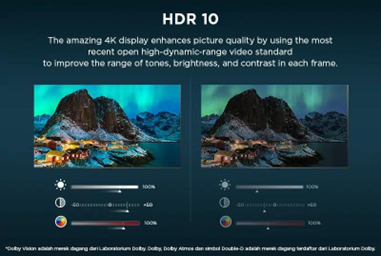These days, televisions
have so many intricate functions that it might be challenging to select the
appropriate one for your needs. Which type of OLED, QLED, or LED television
should you buy? Is it worth it to have an 8K television? Here is a complete
guide that covers all you need to know about getting a new TV, so that you may
make the right choice when buying a new flat-screen television. To make things
easier for you, we have compiled this information. Continue reading to find out
which smart TV is ideal for you, even if you are only interested in purchasing
a new flat screen.
Things
to Know When Buying Smart Televisions
1. What
kind and size of television should you get?
When it pertains to the
size of a TV, having a larger screen is nearly always preferable. Measure how
far away from the screen you often watch TV and then divide that amount by 1.4
to get the optimal size of the television you should purchase. For instance, if
you are 10 feet away, which is equivalent to 120 inches, you should get a TV
that is 85 inches.

This guarantees that the
display will take up a sufficient portion of your field of view, making the
experience more immersive. Since 4K TVs started becoming more widely available
in 2019, the most common screen size in the United States has grown to 65 inches
at this point.
2. Which
Type of Television Should You Buy: LED or OLED?
If you want to watch
television in a room that has a lot of natural light, you should obtain an LED
television since its display can be made bright enough to compete with it. On
the other hand, if you want to watch movies in a room that is dimly lit, you
should consider purchasing an OLED TV because of its superior contrast and
motion-handling capabilities.
If you decide to get an
LED television, you must be aware of the backlighting that it employs. There
are televisions available that have what are called "edge-lit"
displays, which have a row of LEDs on the top, bottom, or side of the screen.
There are additional televisions known as "direct-lit" models that
make use of a matrix of LEDs. However, light will "bleed" from the
brightest sections of a picture into the darker areas when seen on any of these
screens.
3. HD,
4K, and 8K resolutions?
When shopping for a new
television, resolution is among the most crucial aspects to take into
consideration. This is a reference to the number of pixels that a screen
possesses. To put it simply, a higher resolution will allow you to view a
greater number of individual details.

Nowadays, most
televisions offer resolutions of up to 8K, 4K, and Full HD (also known as high
definition). Full HD, also known as 1080p, televisions have more than 2 million
pixels, but 4K UHD, or ultra-high-definition, televisions have more than 8
million pixels, and 8K televisions have more than 33 million pixels.
To put it another way, a
4K television has a pixel count that is four times greater than a Full
High-Definition television, while an 8K television has four times as many
pixels as a 4K television.
Conclusion
Buying a smart TV nowadays is important since you can now find entertainment in these appliances. To ensure that you get the best smart TV, it is imperative that you consider the television’s size, resolution, and whether you will buy an LED or OLED TV. If you are looking for the best yet affordable smart TV, check out 65 inch smart tv price in india now!
